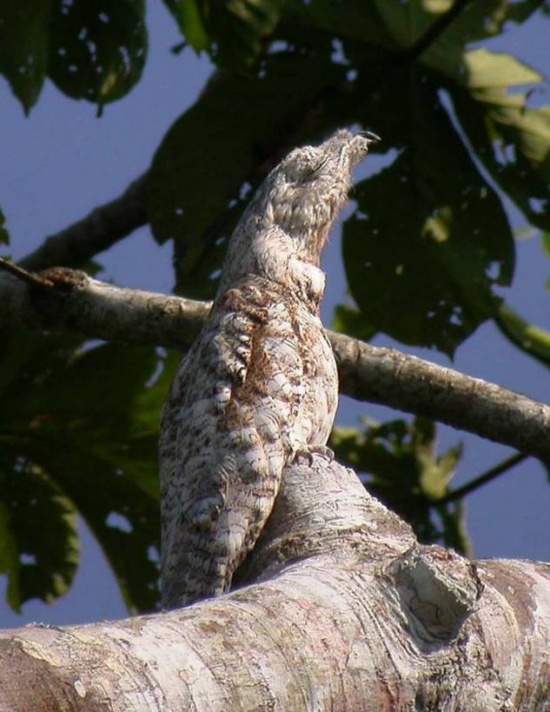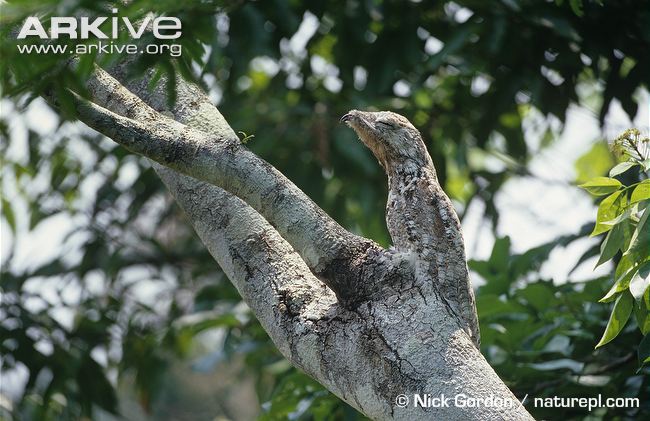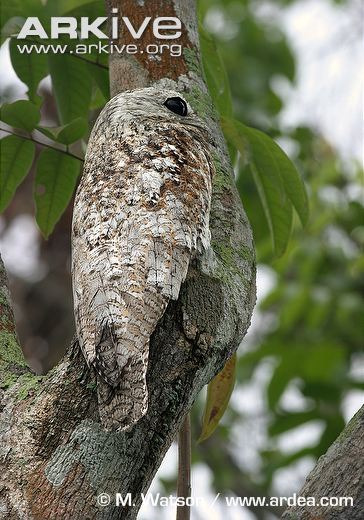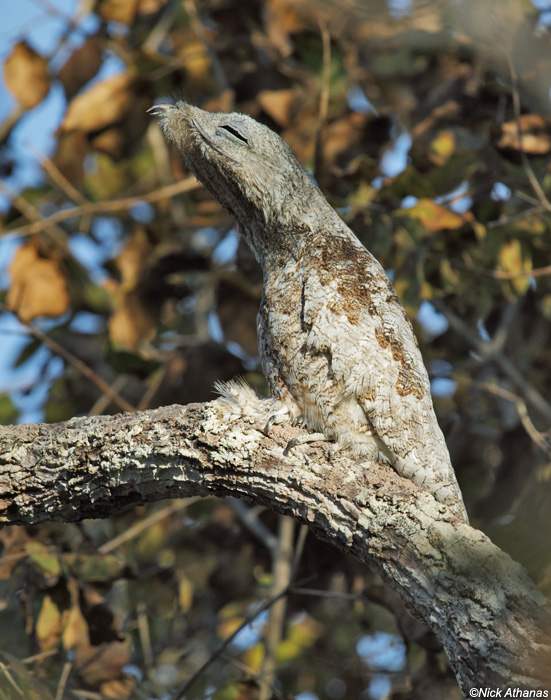
Nyctibius grandis
TAXONOMY
Caprimulgus grandis Gmelin, 1789, Brazil and Cayenne. Two
subspecies.
OTHER COMMON NAMES
English: Grand potoo; French: Grand ibijau; German: Riesentagschlдfer;
Spanish: Nictibio grande.
PHYSICAL CHARACTERISTICS
19–23 in (48–57 cm); 12.7–22 oz (360–624 g). The largest
member of its genus. Overall color ranges from buff-brown to
nearly white; the palest and most variable species of potoo.
Sexes are similar.
DISTRIBUTION
Central and South America from southern Mexico to southeastern
Brazil.
HABITAT
Forests, woodlands, and plantations.
BEHAVIOR
Roosts high in trees during day, active at dusk and during
night. Calls most actively on moonlit nights, giving loud
guttural snoring sound from perch that functions in territorial
defense.
FEEDING ECOLOGY AND DIET
Sallies for flying prey from an exposed perch, taking mainly insects
such as beetles and moths, but sometimes also small bats.
REPRODUCTIVE BIOLOGY
Clutch of a single egg is laid in depression in branch of tree.
Incubation by both sexes reported, period unknown. Fledging
period of one nestling was at least 55 days.
CONSERVATION STATUS
Not threatened overall, but has doubtless declined in many regions
because of deforestation.
SIGNIFICANCE TO HUMANS
Subject of mythology and superstition in rural areas.
Photo Gallery of - Great potoo




 Animalia Life
Animalia Life